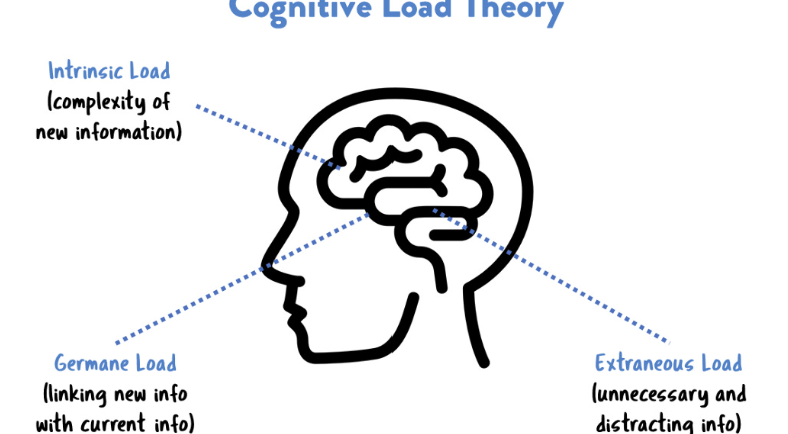Mastering Cognitive Load: A Guide to Effective Learning Strategies
Cognitive Load


Introduction: In the world of education and instructional design, understanding how the human brain processes information is key to creating effective learning experiences. One of the most influential frameworks for this is Cognitive Load Theory, which explains how different types of cognitive load—intrinsic, extraneous, and germane—affect our ability to learn. By managing these cognitive loads effectively, educators and instructional designers can help learners absorb and retain information more efficiently. In this blog, we’ll explore how to manage intrinsic cognitive load, reduce extraneous load, and optimize germane load for better learning outcomes.
1. Managing Intrinsic Cognitive Load
Understanding Intrinsic Cognitive Load: Intrinsic cognitive load refers to the inherent difficulty of the material being learned. It’s determined by the complexity of the content and the learner’s prior knowledge. For example, learning basic addition involves a lower intrinsic load compared to solving complex calculus problems.
How to Manage Intrinsic Load:
Sequencing and Scaffolding: Break down complex information into smaller, more manageable chunks. Start with simpler concepts and gradually build up to more complex ones. This approach, known as scaffolding, helps learners build a solid foundation before tackling more difficult material.
Prior Knowledge Activation: Before introducing new content, activate learners’ prior knowledge by reviewing related concepts. This helps bridge the gap between what they already know and what they’re about to learn, making the new information easier to grasp.
Simplifying Complex Information: Use clear, straightforward language and avoid overwhelming learners with too much information at once. Presenting content in a logical, step-by-step manner helps learners process and understand complex ideas.
2. Reducing Extraneous Cognitive Load
Understanding Extraneous Cognitive Load: Extraneous cognitive load is the mental effort required to process information that isn’t directly related to learning the material. It often results from poorly designed instructional materials, unnecessary distractions, or overly complex explanations.
How to Reduce Extraneous Load:
Simplify Visuals and Layout: Avoid cluttered visuals and overly complex diagrams. Use clear, simple graphics that directly support the learning objectives. Ensure that the layout of the learning materials is intuitive and easy to navigate.
Eliminate Irrelevant Information: Focus on what’s essential to the learning objectives. Remove any content, visuals, or activities that don’t contribute directly to understanding the key concepts. This helps learners focus their mental resources on what matters most.
Use Coherent Multimedia: When incorporating multimedia elements, ensure they are directly relevant to the content. For example, align images and text closely so that learners can easily make connections between the two. Avoid using decorative images or sounds that don’t support learning.
3. Optimizing Germane Cognitive Load
Understanding Germane Cognitive Load: Germane cognitive load refers to the mental effort dedicated to processing, constructing, and automating schemas—mental structures that help organize and interpret information. Unlike extraneous load, which should be minimized, germane load should be optimized to enhance learning.
How to Optimize Germane Load:
Encourage Active Learning: Promote active engagement with the material through activities like summarizing, questioning, and problem-solving. These activities encourage learners to process information deeply, enhancing their understanding and retention.
Foster Schema Construction: Use analogies, examples, and comparisons to help learners relate new information to existing knowledge. This aids in the construction of schemas, making it easier for learners to store and retrieve information.
Provide Practice and Feedback: Offer opportunities for learners to practice applying what they’ve learned. Provide immediate, constructive feedback to reinforce correct understanding and guide learners in refining their knowledge. Repetition and practice are key to optimizing germane load, as they help move information from short-term to long-term memory.
Conclusion:
Effective learning isn’t just about presenting information—it’s about how that information is processed by the brain. By managing intrinsic cognitive load, reducing extraneous load, and optimizing germane load, educators and instructional designers can create learning experiences that are both challenging and manageable. This balanced approach not only makes learning more efficient but also more enjoyable for the learner. Whether you’re designing a course, teaching a class, or studying on your own, understanding and applying these principles can lead to better outcomes and a deeper understanding of the material. In the end, it’s about creating a learning environment that supports the brain’s natural processes, making education more effective for everyone.
